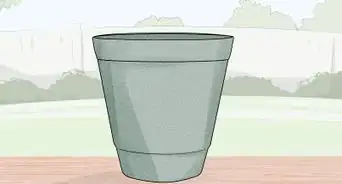This article was co-authored by Maggie Moran. Maggie Moran is a Professional Gardener in Pennsylvania.
This article has been viewed 76,469 times.
With striking flowers and leaves that float serenely, water lilies are enchanting plants. They’re easy to grow and care for, so turning your pond into a picturesque oasis won’t take much work. Plant water lilies in containers to control their growth, submerge the container in a pond or aquatic planter, and make sure they get plenty of sun. Trim old flowers and leaves to prevent rot, and divide your rapidly growing lilies every 2 to 3 years. With a little time and care, you'll have a gorgeous collection of water lilies year after year.
Steps
Planning Your Lily Garden
-
1Plant water lilies in containers instead of directly in the ground. Use a wide, shallow pot or a mesh basket designed for aquatic planting. The container should have a diameter of 14 to 16 inches (36 to 41 cm).[1]
- It’s easier to maintain potted lilies. Additionally, a lily planted directly into the ground could eventually overwhelm your pond. When planted in the ground, a water lily’s root system can cover a diameter of 15 feet (4.6 m) within 5 years.
- You can find aquatic plant necessities, including a mesh basket and aquatic soil, online, at your local garden center, or at a home improvement store.
-
2Use an aquatic planter if you don’t have a pond. If you have one, you can plant lilies in your pond or backyard water feature. If not, purchase a large aquatic planter, fill it with water, and submerge the pot that holds the lily.[2]
- Go for an aquatic planter that’s around 6 by 8 feet (1.8 by 2.4 m). Make sure it’s designed for aquatic plants and doesn’t have any drainage holes.
Advertisement -
3Ensure your pond or container gets at least 6 to 8 hours of full sun. While lilies need a minimum of 6 hours of direct sunlight, more light encourages them to produce more flowers. Ideally, your lilies should get at least 8 hours of sun.[3]
-
4Plant your lilies in the spring. Late April to early May is the best time to plant water lilies in the Northern Hemisphere. In cooler climates, plant when there’s no risk of frost.[4]
- There are 2 varieties of water lily: hardy and tropical. As their name implies, hardy water lilies can tolerate cooler temperatures. You still need to plant them in the spring, but maintaining a high water temperature isn’t as important.
-
5Make sure your pond is warm if you choose tropical lilies. Tropical species can’t tolerate water temperatures below 65 °F (18 °C), so make sure your pond or aquatic container can sustain warm water before planting. Ideally, your water should be at least 70 °F (21 °C).[5]
-
6Purchase lilies with healthy crowns and leaves. You can find water lilies at your local nursery or garden center, or you could ask a friend with lilies for clippings. Look for plants with healthy crowns, or the part where the stems meet the roots. Check for stems that easily pull away from the crown, and look for yellow, curling, or damaged leaves.[6]
- An unhealthy crown and yellow leaves are signs of crown rot. It’s an incurable fungal infection, and is one of the only health issues that affect water lilies.
Planting a Water Lily
-
1Fill 3/4 of a container with aquatic loam-based soil, then add fertilizer. Line your pot or aquatic basket with a coarse fabric, such as hessian or burlap. Use a loam-based soil labeled for aquatic use, as standard potting soil is too fluffy and will float away when submerged. Add soil to the container until it’s 3/4 full, then add aquatic fertilizer.[7]
- The right amount of fertilizer depends on your product, so read the instructions for the fertilizer you purchase. A typical ratio is 10 grams (about 1/3 oz) of fertilizer for 1 gallon (3.8 L) of soil.
-
2Remove the lily from its old container and trim it. Gently pull the lily out of the old container and rinse away excess soil from its rhizome, or root system. Trim any old, fleshy roots with pruning shears, but leave white, hair-like roots intact.[8]
- Trim away all old, fleshy roots. If you don't see any, you can skip trimming.
-
3Place the root ball in the soil at a 45 degree angle. Set the lily's root ball on top of the soil on the side of the container. Make sure the crown, or the part where the stems emerge, points at a 45 degree angle toward the center of the pot.[9]
- If your lily hasn’t matured and has a growing tip instead of stems, position the growing tip at the same level as the top of the soil.
-
4Add more soil and a top layer of pea gravel. Add more soil, but don’t completely fill the container. Leave about 1 to 2 inches (2.5 to 5.1 cm) between the top of the soil and container’s rim. Lightly press the soil to pack it, then add a layer of pea gravel to help keep the soil from floating away.[10]
- Rinse the pea gravel thoroughly before you add it.
- Make sure you don’t pack the gravel tightly around the stems. If your lily isn’t mature, leave a space in the gravel for the plant’s growing tip, which should be level with the top of the soil.
-
5Water it well, then submerge the container in water. Soak the pot completely with a hose, then lower it into your pond or aquatic planter. For the first 3 to 4 weeks, submerge the pot so that 5 to 6 inches (13 to 15 cm) of water covers the crown and young leaves float on the water’s surface. If necessary, stack bricks or other supports to keep the pot at the right height.[11]
- Keeping the pot at a shallow height will encourage growth.
- When you submerge the container in water, lower it into the water at an angle so that air trapped inside can escape.
Maintaining Your Lilies
-
1Place the container at gradually deeper water levels. After about 3 weeks, lower the pot so 8 to 10 inches (20 to 25 cm) of water covers the crown. As it grows, gradually lower it until 12 to 18 inches (30 to 46 cm) of water covers the crown.[12]
-
2Remove old flowers and leaves before they rot. If you plant in spring, you should see flowers by June. Flowers last 3 to 4 days, and should be trimmed and removed when they whither. You should also remove old leaves to prevent rot.[13]
- Deadheading, or removing old flowers and leaves, will help keep your water clear and encourage new flowers to form.
-
3Fertilize lilies monthly during the growing season. Lilies are hungry plants, and should be fertilized with a slow release aquatic formula every 4 to 6 weeks. Lift the pot out of the water, and use your fingers to clear out small holes in the gravel and soil. Insert aquatic fertilizer tablets or pellets, then smooth over the gravel and submerge the pot.[14]
- The amount of fertilizer to add depends on your product, so check its label for specific instructions. Some aquatic fertilizers specify 1 tablet per 1 gallon (3.8 L) of soil, while other products recommend 2 to 4 tablets for the same amount of soil.
-
4Bring tropical lilies inside when the water temperature dips below 65 °F (18 °C). If your pond freezes solid, you’ll need to winterize hardy lilies inside, too. Store the pot in a large aquarium filled with water.[15]
- If you can't store the entire pot, trim the leaves and remove the rhizome, then apply a dusting of fungicide. Store the rhizome in a plastic bag filled with peat moss, and keep the bag in a cool, moist place, such as a basement.
- If your pond is at least 18 inches (46 cm) deep and doesn’t completely freeze, you can winterize your hardy lilies outside. Place the pot in the deepest part of the pond, where it'll be protected from cold air.
-
5Divide an overgrown lily every 2 to 3 years. Eventually, the rhizome will start to crowd the pot, and you’ll need to divide it. In the spring, remove the rhizome, or root ball, from the pot and rinse away excess soil from the roots. Look for tuber-like shoots with distinct growing tips or emerging stems. Using a knife or pruning shears, cut the shoots and surrounding roots in lengths of at least 3 inches (7.6 cm) from the rest of the root ball.[16]
- You’ll likely be able to divide the root ball into several shoots. Plant each shoot in a separate container, then place them in your pond or give them to a friend.
Expert Q&A
Did you know you can get expert answers for this article?
Unlock expert answers by supporting wikiHow
-
QuestionHow many hours of sun do water lilies need?
 Maggie MoranMaggie Moran is a Professional Gardener in Pennsylvania.
Maggie MoranMaggie Moran is a Professional Gardener in Pennsylvania.
Home & Garden Specialist
-
QuestionCan you grow water lilies inside?
 Maggie MoranMaggie Moran is a Professional Gardener in Pennsylvania.
Maggie MoranMaggie Moran is a Professional Gardener in Pennsylvania.
Home & Garden Specialist
-
QuestionHow deep do water lilies need to be planted in a pond?
 Maggie MoranMaggie Moran is a Professional Gardener in Pennsylvania.
Maggie MoranMaggie Moran is a Professional Gardener in Pennsylvania.
Home & Garden Specialist
Things You’ll Need
- Wide, shallow pot or aquatic mesh basket
- Hessian or coarse fabric
- Aquatic soil
- Fertilizer for aquatic plants
- Garden trowel
- Pruning shears
- Large aquatic planter (if you don’t have a pond)
References
- ↑ https://ipm.missouri.edu/MEG/2017/5/Water_Lilies/
- ↑ http://iwgs.org/easy-steps-to-plant-a-potted-waterlily/
- ↑ https://www.rhs.org.uk/advice/profile?PID=705
- ↑ https://ipm.missouri.edu/MEG/2017/5/Water_Lilies/
- ↑ https://ipm.missouri.edu/MEG/2017/5/Water_Lilies/
- ↑ https://www.rhs.org.uk/advice/profile?PID=705
- ↑ http://www.watergarden.org/Aquatic-Plant-Care
- ↑ http://www.bhg.com/gardening/landscaping-projects/water-gardens/growing-water-lilies/
- ↑ http://iwgs.org/easy-steps-to-plant-a-potted-waterlily/
- ↑ http://www.bhg.com/gardening/landscaping-projects/water-gardens/growing-water-lilies/
- ↑ http://www.watergarden.org/Aquatic-Plant-Care
- ↑ https://www.rhs.org.uk/advice/profile?PID=705
- ↑ https://www.rhs.org.uk/advice/profile?PID=705
- ↑ http://www.watergarden.org/Aquatic-Plant-Care
- ↑ https://ipm.missouri.edu/MEG/2017/5/Water_Lilies/
- ↑ http://www.bbc.co.uk/gardening/basics/techniques/propagation_dividewaterlilies1.shtml
About This Article
Water lilies are serene, floating plants that can make a great addition to your pond or garden. In the Northern Hemisphere, it’s best to plant them in the spring when the temperature’s warmer. It’s easier to plant water lilies in containers, but you can plant them in your pond too. Water lilies need 6 to 8 hours of sunlight and should be planted at a 45-degree angle. If you’re using a container, plant them in soil and fertilizer with a layer of pea gravel on top to stop the soil from floating away. Then, fill the container with water. For more tips from our Gardening co-author, including how to manage overgrown water lilies, read on!
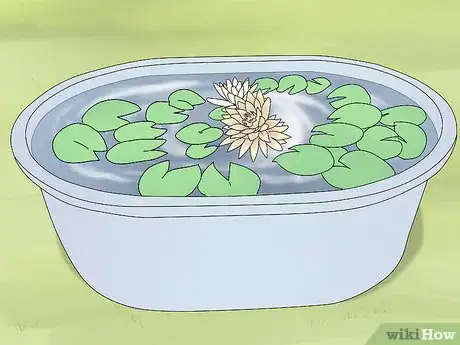
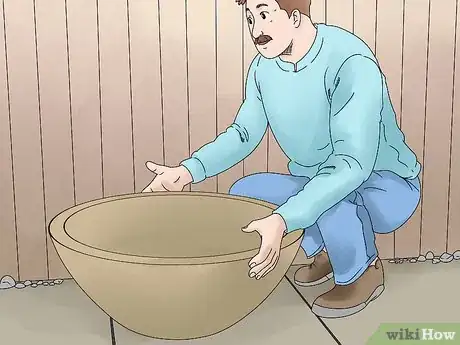
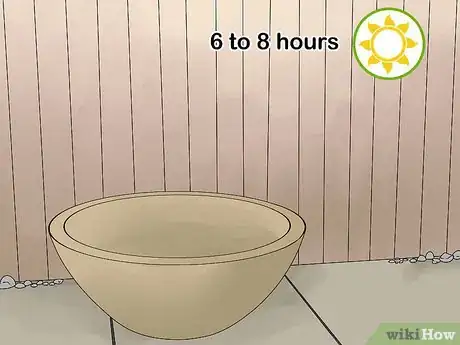
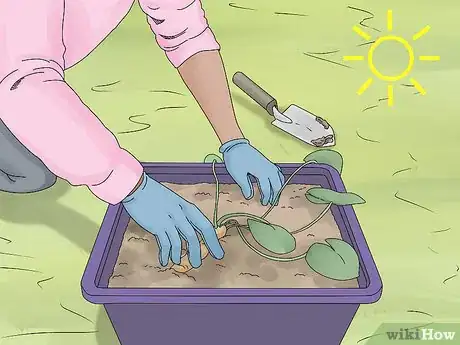
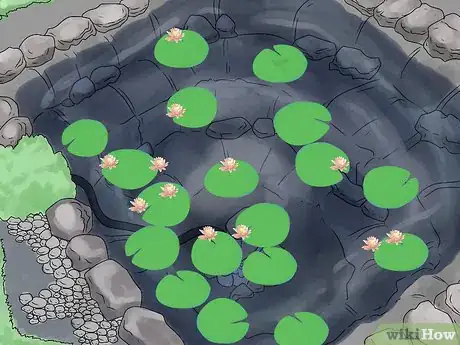
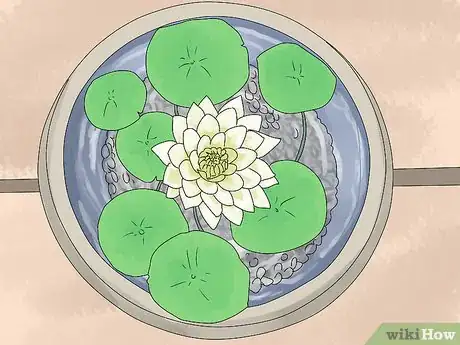
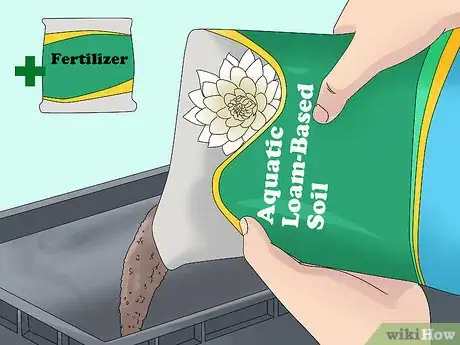
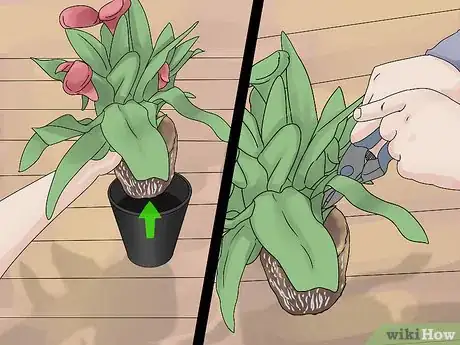
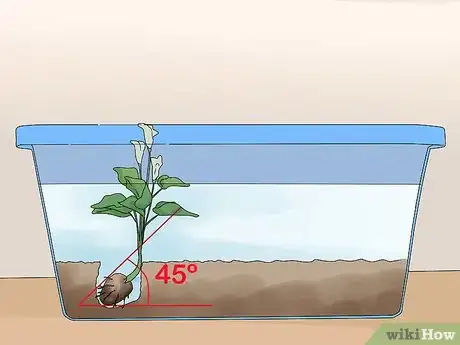
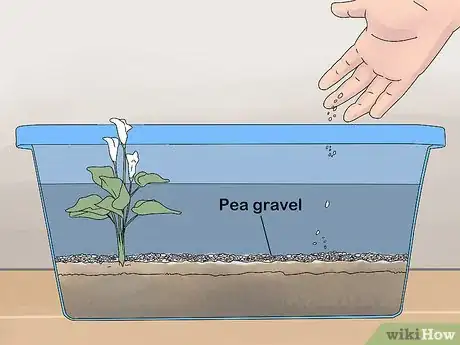
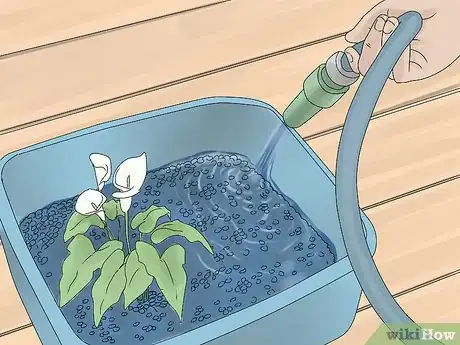
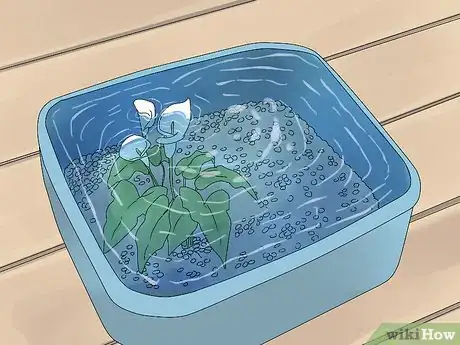
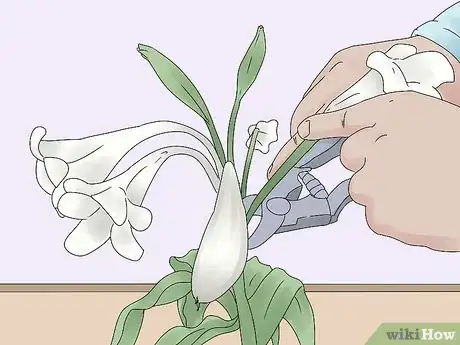
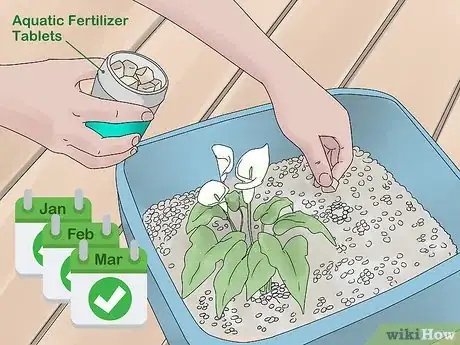
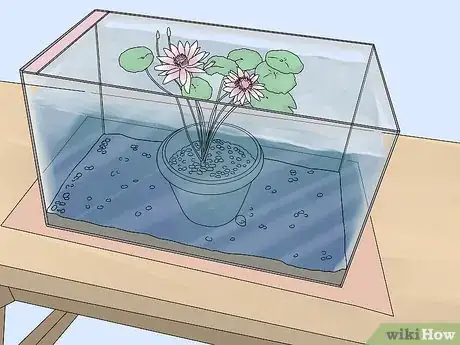



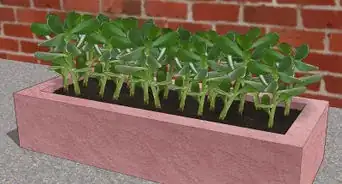

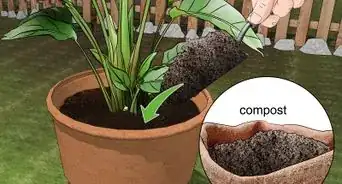


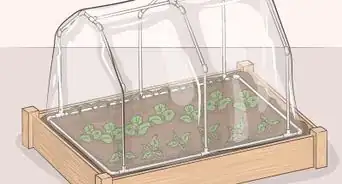
-Oven-Step-15.webp)

